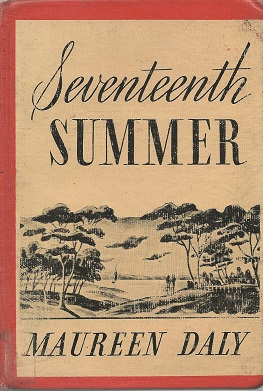How do archives collect girl authors? In this interview series, we welcome curators and archivists to share how their institutions collect and utilize materials by girls who were or became published authors in their youth. Today, we look at the papers of Maureen Daly (1921-2006), an Irish-American writer best known for her 1942 novel, Seventeenth Summer. Special thanks to Linda J. Long, Curator of Manuscripts at the University of Oregon Libraries.
What kinds of records do you keep?
We collect the papers of individuals and the records of organizations. For individuals, that can be single items such as a letter, a diary, a photograph, or larger groups of materials, such as correspondence, literary manuscripts, meeting minutes, reports, and so on. Many of our children’s literature collections also include original artwork.
Do you have physical objects in the archives from the author?
We do have few collections that contain artifacts, such as pens, eyeglasses, and in one case, a traveling/portable writing desk. One collection reflecting travel along the Oregon Trail contains such objects.
How are the records utilized? Do researchers use items for books/articles or for historical research for movies or tv shows?
Researchers come to do research in our collections from Oregon, across the U.S. and from around the world. They read the documents, take notes, and later can cite or quote from these documents in their scholarly publications.
What is your favourite object/document/record in the collections related to this author?
My favorite document from the Maureen Daly Papers is the original manuscript for Seventeenth Summer. It’s exciting to have the original text so that researchers can see how and if a writer made editorial changes.

